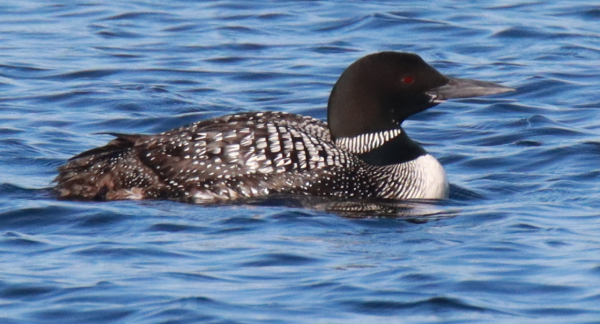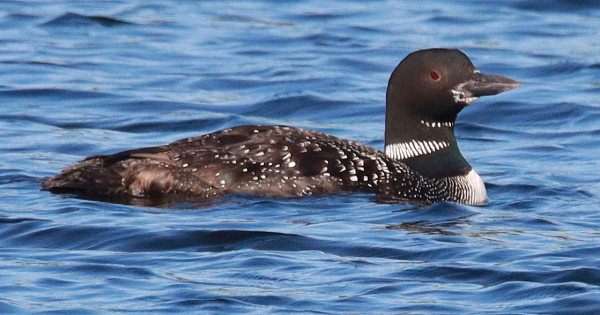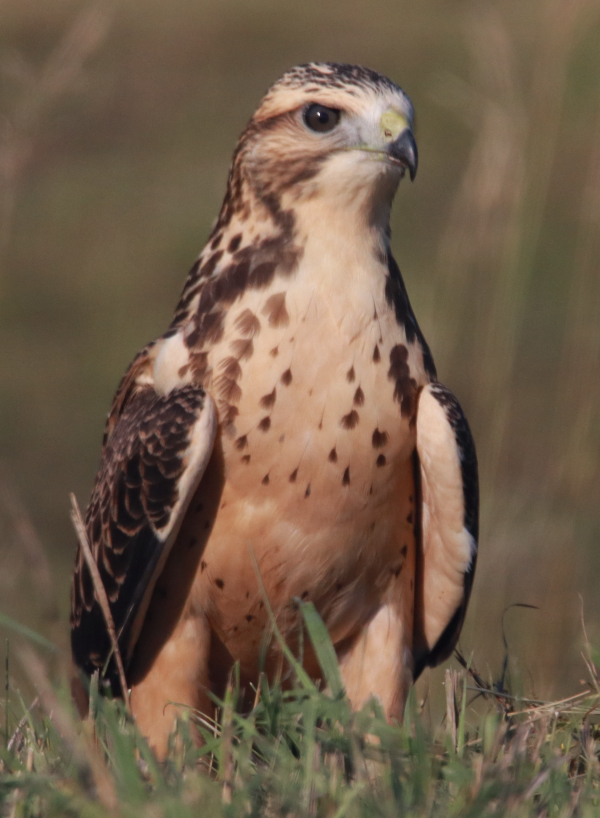 Swimming in the midst of dreamy blue water the female of a pair of Common Loons provided a somewhat distant photo from the shore.  The male Loon showed more signs of feather molting on its face, back, and sides.  The first Swainson
|
 Swimming in the midst of dreamy blue water the female of a pair of Common Loons provided a somewhat distant photo from the shore.  The male Loon showed more signs of feather molting on its face, back, and sides.  The first Swainson
|